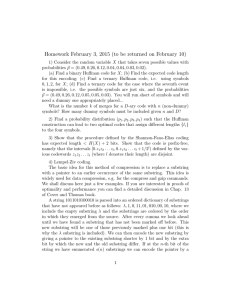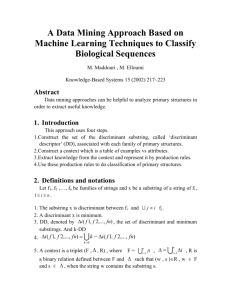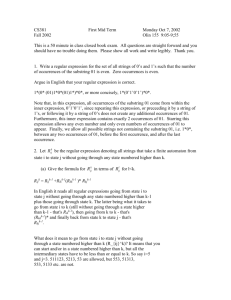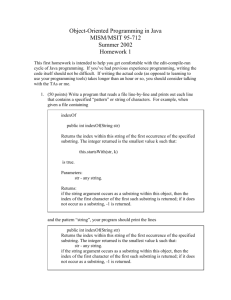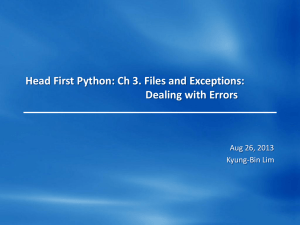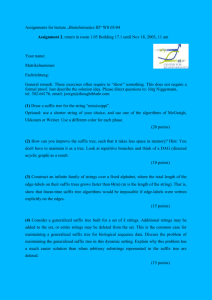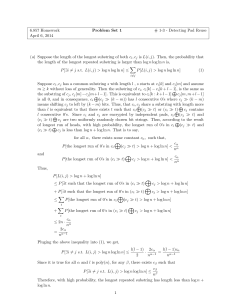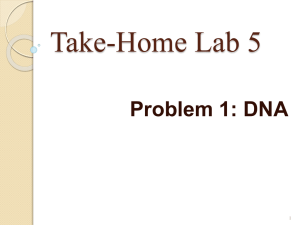PHYS 273, Winter 2016, Homework 5
advertisement
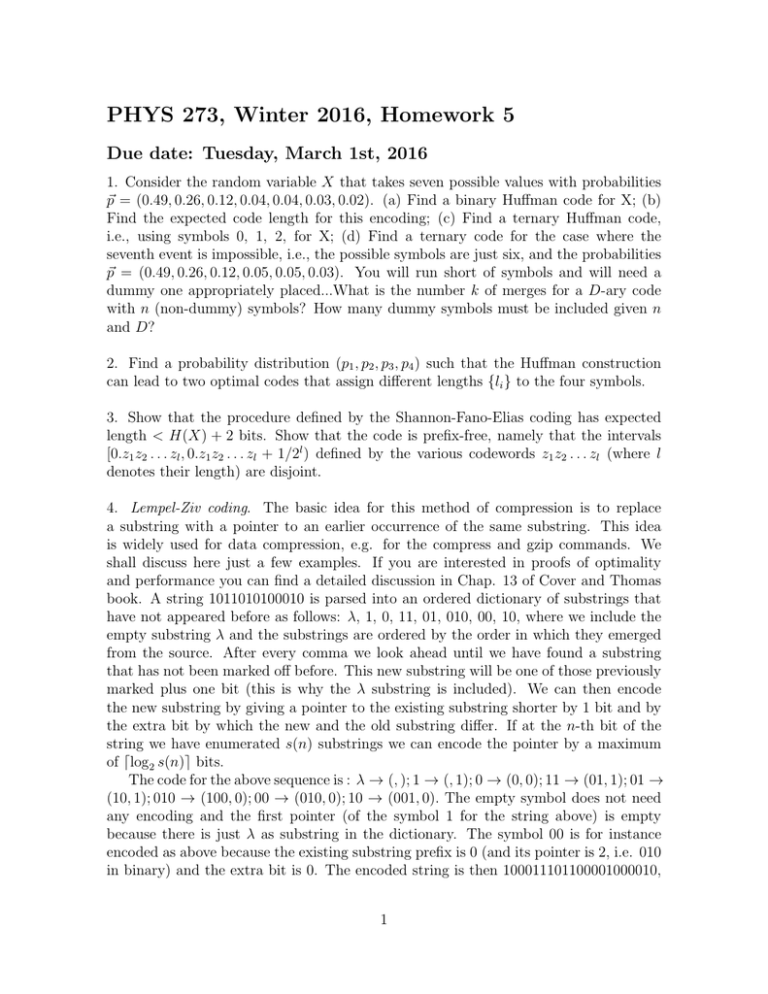
PHYS 273, Winter 2016, Homework 5
Due date: Tuesday, March 1st, 2016
1. Consider the random variable X that takes seven possible values with probabilities
p~ = (0.49, 0.26, 0.12, 0.04, 0.04, 0.03, 0.02). (a) Find a binary Huffman code for X; (b)
Find the expected code length for this encoding; (c) Find a ternary Huffman code,
i.e., using symbols 0, 1, 2, for X; (d) Find a ternary code for the case where the
seventh event is impossible, i.e., the possible symbols are just six, and the probabilities
p~ = (0.49, 0.26, 0.12, 0.05, 0.05, 0.03). You will run short of symbols and will need a
dummy one appropriately placed...What is the number k of merges for a D-ary code
with n (non-dummy) symbols? How many dummy symbols must be included given n
and D?
2. Find a probability distribution (p1 , p2 , p3 , p4 ) such that the Huffman construction
can lead to two optimal codes that assign different lengths {li } to the four symbols.
3. Show that the procedure defined by the Shannon-Fano-Elias coding has expected
length < H(X) + 2 bits. Show that the code is prefix-free, namely that the intervals
[0.z1 z2 . . . zl , 0.z1 z2 . . . zl + 1/2l ) defined by the various codewords z1 z2 . . . zl (where l
denotes their length) are disjoint.
4. Lempel-Ziv coding. The basic idea for this method of compression is to replace
a substring with a pointer to an earlier occurrence of the same substring. This idea
is widely used for data compression, e.g. for the compress and gzip commands. We
shall discuss here just a few examples. If you are interested in proofs of optimality
and performance you can find a detailed discussion in Chap. 13 of Cover and Thomas
book. A string 1011010100010 is parsed into an ordered dictionary of substrings that
have not appeared before as follows: λ, 1, 0, 11, 01, 010, 00, 10, where we include the
empty substring λ and the substrings are ordered by the order in which they emerged
from the source. After every comma we look ahead until we have found a substring
that has not been marked off before. This new substring will be one of those previously
marked plus one bit (this is why the λ substring is included). We can then encode
the new substring by giving a pointer to the existing substring shorter by 1 bit and by
the extra bit by which the new and the old substring differ. If at the n-th bit of the
string we have enumerated s(n) substrings we can encode the pointer by a maximum
of dlog2 s(n)e bits.
The code for the above sequence is : λ → (, ); 1 → (, 1); 0 → (0, 0); 11 → (01, 1); 01 →
(10, 1); 010 → (100, 0); 00 → (010, 0); 10 → (001, 0). The empty symbol does not need
any encoding and the first pointer (of the symbol 1 for the string above) is empty
because there is just λ as substring in the dictionary. The symbol 00 is for instance
encoded as above because the existing substring prefix is 0 (and its pointer is 2, i.e. 010
in binary) and the extra bit is 0. The encoded string is then 100011101100001000010,
1
which is actually longer than the original one as no major redundancy was present.
(a) Encode the string 000000000000100000000000 using the basic algorithm described
above.
2
